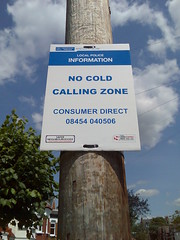The Hope Diamond is the most famous diamond in the world. Its large size (over 45 carats) and deep blue color make it instantly recognizable.
The purported curse doesn’t hurt either.
But what does this have to do with creating a remarkable marketing strategy for your small business? After all, you’re likely not selling diamonds.
Why this matters for your small business
It’s an only.
It’s the only diamond like it. And that makes it remarkable, and worth talking about.
Being an “only” can make you much more successful. It’s one way of eliminating your competition.
What is an “only” business?
An “only” business is a company that does something unique; a company that offers a product or a service that your competitors can’t easily copy, or copy at all.
It gives your business an edge and helps spread the word about your products and services. The more unique (or hard to copy) it is, the better.
Only Ivory Soap is “99 3/4% pure.”
Only Zappos lets you return your shoes at any time for any reason, even if they know you’re cheating, and even if you do it repeatedly.
How to be an “only”
Let’s say your firm specializes in ghostwriting guest blog posts. You’ve got a team of writers standing by to write posts for people who don’t have the time or the skill to do it themselves.
And, you offer really fast turnaround — you’re the FedEx of blog post ghostwriting. You can tell your customers, and potential customers, that “only Supersonic Ghostwriting offers an overnight blog post service. Your posts go from our keyboards to your inbox in 24 hours.”
Or, take my friend Phil. He owns a toy store in Michigan. Toy stores aren’t all that unusual, but Phil’s is. For one thing, he offers a toy lending service to local schools. Teachers can come in and choose from a selection of toys — for free.
His staff carries lists of favorite toys in their pockets, so they can help confused customers make the right selection. They don’t push the newest toy or the most expensive, instead they recommend the toys that are most appropriate. His customers know this, and trust him even more for it. (Sometimes, he even sends free toys to his friends; my nephew loves the Matchbox trucks Phil sent me, and guess who’s his favorite aunt).
Be the hope diamond of your industry
It’s what we marketing types call a “unique selling proposition.” That’s just a fancy way of saying you offer something remarkable that your competition doesn’t (or can’t).
Suddenly, instead of being one of a crowd of writers or toy store owners offering interchangeable products and services, you’re unique.
Now, some homework. Go think about what makes you unique, and how you can be an ‘only.” If you need help, email me.
Diamonds are optional.





